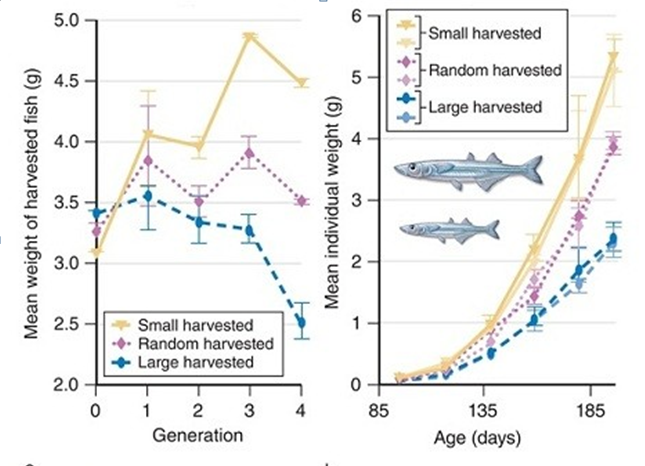In figure (a), what was the dependent variable?

A. the generation
B. the species of fish
C. the age of the fish
D. the size at which the fish were harvested
E. the mean weight of harvested fish
E. the mean weight of harvested fish
You might also like to view...
Viruses infecting ________ are typically the easiest to grow in the laboratory
A) plants B) animals C) fungi D) prokaryotes
A dental student wants to test if fluoride is an effective additive against tooth decay. The student studies tooth decay in a population of people who live in neighborhoods supplied with fluoridated water. This student would like to ask whether access to fluoridated water prevents tooth decay. What would be an effective control group to ask this question?
A. Individuals who have fluoride added to their toothpaste but not their water. B. Individuals with access to fluoridated water. C. Individuals with access to water with no fluoride added. D. Individuals with access to differing amounts of fluoride in the water. Clarify Question 1. What is the key concept addressed by the question? 2. What type of thinking is required? 3. What key words does the question contain and what do they mean? Gather Content 1. What do you know about experimental design?How does it relate to the question? Consider Possibilities 1. What other information is related to the question? Which information is most useful? What are other explanations are there for these results? Choose Answer 1.Given what you now know, what information and/or problem solving approach is most likely to produce the correct answer? Reflect on Process 1. Did your problem-solving process lead you to the correct answer? If not, where did the process break down or lead you astray? How can you revise your approach to produce a more desirable result?
Why is only a fraction of an organism's genes represented in any cDNA library?
What will be an ideal response?
Cdks are activated only when they bind to
A) centrioles. B) cytosine. C) cyclin. D) chromatids.